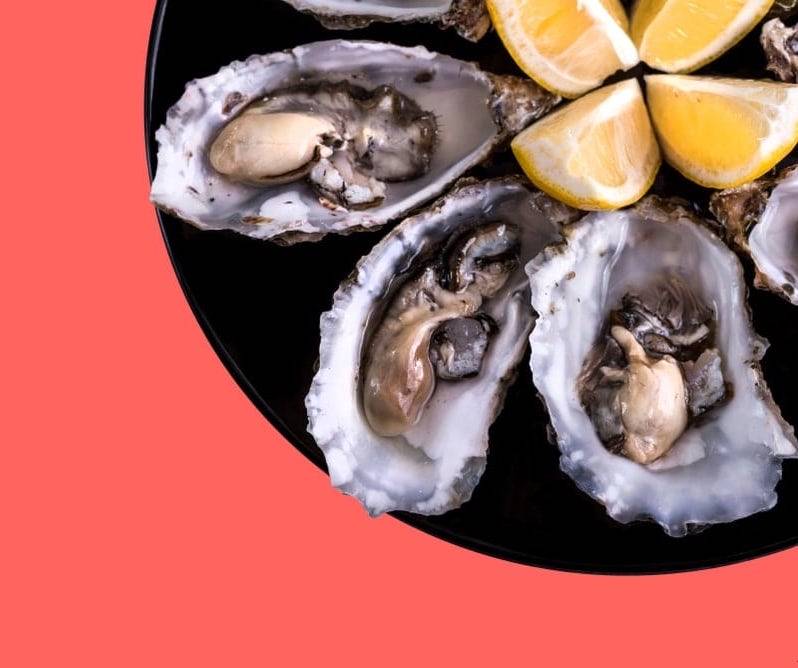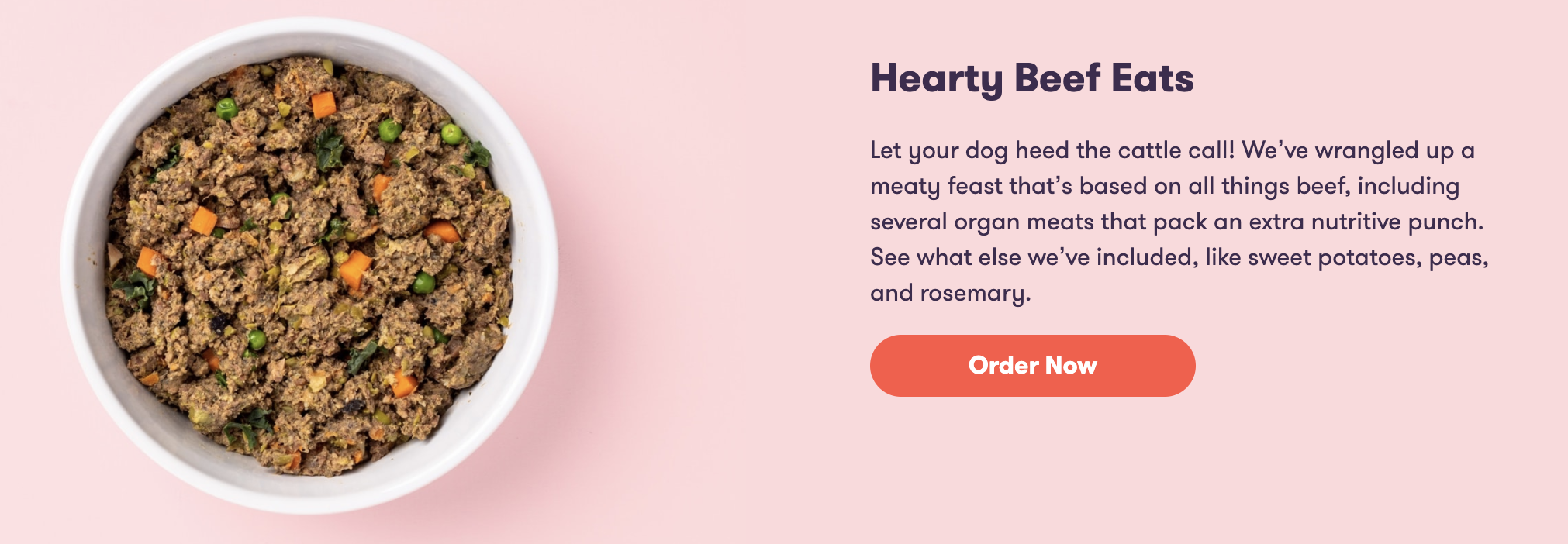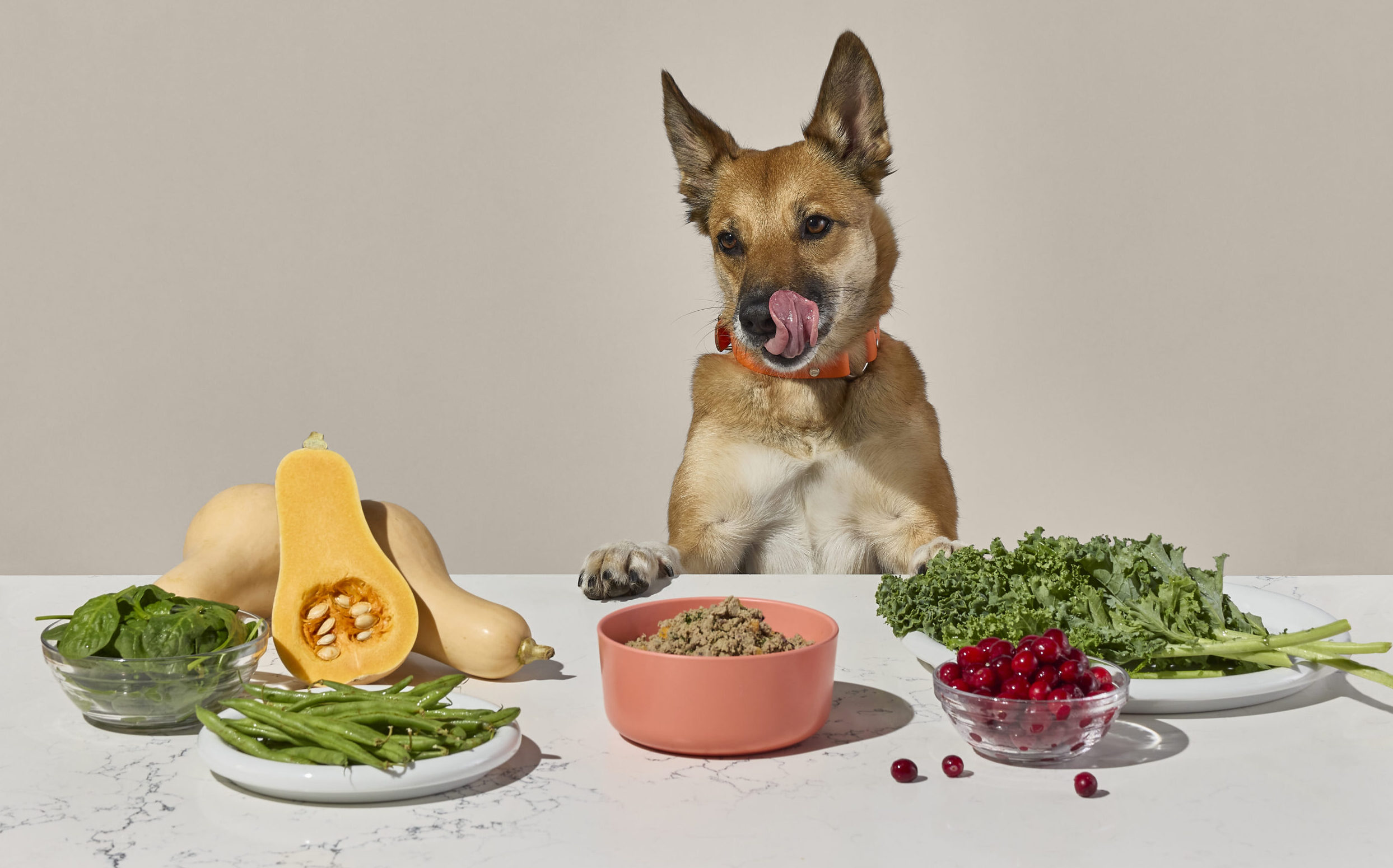Hey Ollie blog readers! We’re offering you an exclusive 60% OFF your starter box! Try now!
Oysters — those slimy slippery aphrodisiacs. They have some health benefits for us but what about our dogs? Should you bring your pup to an outdoor oyster bar with you?
Can Dogs Eat Oysters?
Yes, your pet can eat oysters. In fact, adding some seafood to your best friend’s diet can have many health benefits. In dogs with allergies to chicken, fish, and seafood can be a very appropriate protein option. In addition to oysters, your pet can enjoy salmon, cod, haddock or small oily fish like sardines, smelt or anchovies. You want to avoid fish like tuna and swordfish as they can have higher levels of mercury which is toxic to both dogs and humans.
You should not feed your pet raw fish as they are at risk for salmonella and other foodborne illnesses. When preparing fish for yourself or your pet you want to be sure to use safe food handling practices and not cross-contaminate your food prep areas or your pet’s dinner. This includes not prepping veggies or sides on the same cutting board as raw fish or other meats. You also need to wash the cutting board, knives and any other kitchen items that touched the raw fish or meat with hot water and soap.
When introducing new foods like oysters to your pet be sure to start slowly. Many dogs have sensitive stomachs that can be upset with big changes in their diets. Just like you gradually switch your pet to a new food you also want to add new foods, even fun treats just as slowly and carefully to minimize the risk of an upset stomach or bad reaction.
Three benefits of feeding oysters to your dog
- While there are many benefits to feeding your pet a balanced but varied diet, there are some specific benefits to feeding oysters you’ll want to consider. Three of these benefits include:
- Protein: Oysters are an excellent source of protein which helps your pet feel full when eating. Protein also helps keep your dog’s muscles healthy.
- Omega-3 fatty acids: Oysters contain 500 – 1,000 Mg of Omega-3s per cooked 3-ounce serving. Omega-3s can help your pet stay healthy and reduce inflammation in their bodies. Inflammation is thought to be the cause of many health issues.
- Minerals: Oysters contain Zinc, Iron & Selenium which help with your pet’s joints and energy levels as well as their thyroid health.
Three risks of feeding oysters to your dog
As with any food you are considering adding to your pet’s diet you want to consider the risks as well as the benefits. These three risks are worth considering before you introduce a new food to your pet:
- Allergies: There is always the possibility of your dog being allergic to a new food and this includes oysters. Like with any other new food you want to introduce oysters to your pet slowly as there is always the possibility of an allergy or even a less serious but still uncomfortable intolerance.
- Over Feeding: To help your pet maintain a healthy weight you do not want to overfeed them. Keep in mind the fat and calorie content of their food and don’t overfeed treats, even healthy ones like oysters.
- Toxic fish: As oysters are filter feeders they can take in toxins that could make your pet sick. To minimize this risk, be sure to source oysters from clean cooler waters and ask if your fishmonger tests its product for toxicity. There is an old saying that you should avoid eating oysters in months that don’t have the letter ‘r’ in them – May, June, July, and August. There could be some truth to this as they are generally warmer months in the US and it is hard to keep oysters cold and fresh as the air and water temperatures increase.
How to feed oysters
Follow these instructions to feed your pet correctly to minimize the risk of illness or a bad reaction.
- Remove the oysters from its shellOyster shells are not a safe treat for your pet and you do not want to share these with your dog. If your pet did eat the shell you want to call your veterinarian right away as the shell can cause a blockage in your dog’s intestine or stomach.
- Cook the oystersBy cooking the oysters first you eliminate the risk of transmitting foodborne illness to your pet. Be sure to cook thoroughly to an internal temperature of 140 degrees Fahrenheit to kill any microorganisms. Oysters can be steamed, roasted or grilled for your dog as long as they are heated to 140 degrees. You will want to avoid frying oysters for your dog due to the added fat content from the frying oil. Additionally a lot of fried oysters are also battered prior to frying which is not good for your dog.
- Do not use any oils or spices when cookingThe fat in the oil and the spices can irritate your pet’s stomach. Oils also add fat and calories that can lead to rapid weight gain.
You do not have to feed your pet fresh oysters. You can purchase tinned oysters at most grocery stores. If you are planning to feed your pet tinned oysters, choose oysters packed in water instead of oil or brined. You also will want to make sure the oysters are not flavored or seasoned as the spices used might not be pet safe.
The appropriate portion of cooked oysters will depend on the size of your pet and what else you are feeding them. You may wish to consult with your vet or a canine nutritionist before adding oysters to your pet’s food. They can tell you how many oysters you can feed at a time as well as how often you should be feeding them to your dog. You want to make sure you are not overfeeding and that you are providing adequate well-rounded nutrition for your best friend.
The Ollie blog is devoted to helping pet parents lead healthier lives with their pups. If you want to learn more about our fresh, human-grade food, check out MyOllie.com.
Tagged As:

The nutrition your dog needs,
the food they want.

Enjoying our articles? Subscribe our Newsletters and get new articles directly to your inbox
You might also like
21 July 2025
6 MINS READ
Can Dogs Eat Nuts? Which Nuts Are Safe & Serving Guide
Can dogs have nuts? Some nuts are fine in moderation, but others can cause serious harm. This quick guide breaks down which nuts are safe for dogs, which to skip, and how to feed nut butters respon…
18 July 2025
4 MINS READ
New Puppy Diet Recommendations for Healthy, Happy Growth
As a new pup parent, one of the biggest ways you can support your puppy’s long-term health is by providing the right nutrition. A puppy’s dietary needs are different from an adult dog’s, and…
by Ollie Pets
18 July 2025
5 MINS READ
How Human-Grade Dog Food Benefits Your Pup’s Health and Happiness
You’ve likely heard the term “human-grade” dog food, but what does it really mean, and is it worth it? Choosing human-grade food can be a significant investment for your dog’s long-term he…
by Ollie Pets








